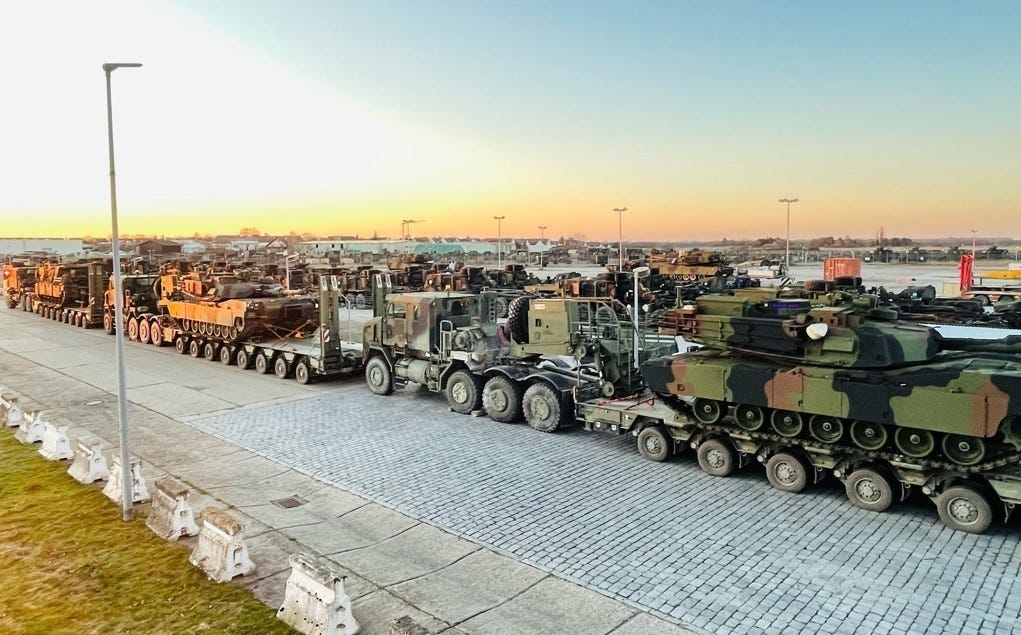Understanding a Potential War Between Russia and NATO
Part 2: Air Reinforcement from North America
Recap of Part 1
The first post compared Russia's current military structure to NATO forces already stationed in Europe.
In Scenario #1, a Russian invasion across the central European border with NATO, resulted in Russia having a 1.25 to 1 ratio of maneuver brigades during the first 30 days. NATO would have a slight advantage in brigades by day 90 and thereafter build to a 2 to 1 advantage over Russia.
In Scenario #2, a Russian invasion of the Baltic states with many NATO countries not contributing. Russia would have a 1.875 to 1 advantage in the number brigades for the first 30 days. At 90 days the Russian advantage would still be 1.25 to 1.
This means in Scenario #1 NATO can handle a Russian invasion without reinforcement from North America, but it would need this reinforcement for Scenario #2.
Introduction
In this post we will examine how NATO could be reinforced by air from North America. This can be done through pre-positioned equipment or by air transportable units.
During the Cold War America, and on a smaller scale Canada, maintained equipment in Europe so troops could be flown in from North America and in combat within one to two weeks. This capability almost disappeared in the 1990s, but has been partially rebuilt since the Russian annexation of Crimea in 2014.
America, and again on a smaller scale Canada, also maintain air transportable light and medium units that rotate through readiness states. This capability did not degrade following the Cold War, but is less optimal for near-peer conventional warfare.
Pre-Positioned Equipment
The Korean War
The end of World War II saw a general demobilization in the West. Germany was occupied and banned from having a military. France and Great Britain were impoverished and focused on colonial policing. The United States attempted to return to its prewar lack of European military presence. In any case, America felt its monopoly on nuclear weapons made conventional armies unnecessary. As an example of America's limited overseas military presence postwar, in 1949 at the outbreak of the Korean War the U.S. Army did not have a full division ready for combat either in Japan or Europe.
NATO was formed in 1949 in response to the Soviet Union's suppression of anti-Communist uprisings in Poland, Hungary and Czechoslovakia. However, it was the invasion of South Korea by communist North Korea in 1950 that jumpstarted defense spending and established the Cold War NATO force structure.
There wasn't just spending increases to fight the Korean War (1950-53), the United States shifted to a defense mindset of being ready to fight a war with the Soviet Union on little to no notice. From 1948 to 1953 American defense spending increased by 500% and never returned to pre-Korean War levels.
Canada followed suit, seeing a 615% increase in defense spending between 1947 and 1953.
With this increased defense spending the United States maintained several divisions in Germany throughout the Cold War. They could also reinforce Germany through the REFORGER system.
Keep reading with a 7-day free trial
Subscribe to The Operational Art of War to keep reading this post and get 7 days of free access to the full post archives.








